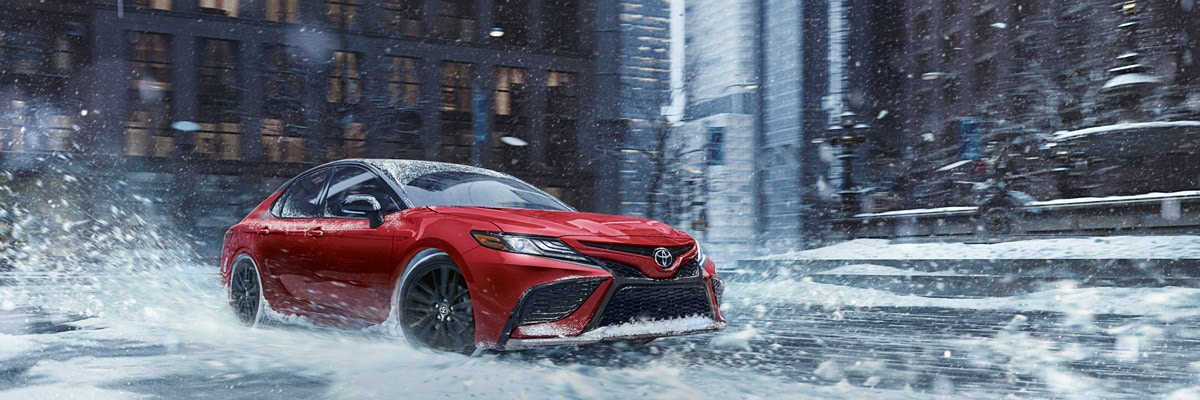How to Drive in the Snow Safely
December 28, 2021
How to Drive in the Snow Safely
A few simple tips to help you & your car drive in the snow safely
We live in an area that mostly only sees rain but every once in a while a snowpocalypse hits the area and we are left navigating not-so-fun weather conditions. As any PNW-er knows, when the snow does hit the ground people’s driving ability suddenly plummets. On the flip side of that, there are overly confidant drivers you’ll see race by you that end up stuck on the side of the road, highway exit, ditch, parking lot, or wherever the snow decides to bite back. Between those two groups, there is one thing that unites both sides: you don’t want to be that person.
Below we outline some easy tips to keep you, your family, and your car safe while driving down snowy roads.
Stay Home
This isn’t so much of a “driving tip” as it is a suggestion. A great piece of advice for driving in bad winter weather is not to drive at all. Working from home is a very viable option nowadays and for most people, their job is the one thing that will get them out of the house and on those icy roads. If you don’t really have to go out, don’t. It’s as easy as that.
Practice Practice Practice
So, here we are completely undermining the tip we just gave you about staying home when a snowpocalypse hits by telling you to practice your winter driving if you can do so safely and reasonably. Almost all of us were taught how to drive on dry pavement and next to none of us were given instruction on how to react and drive in snowy or icy conditions.
The more comfortable you are maintaining and regaining control of your vehicle, the better winter driver you will be. If driving in the snow is unavoidable for you for one reason or another, then practicing (in the daylight of course) can help ease your nerves a bit. Find an empty parking lot or an open area (preferably void of any light poles or other obstacles) to practice your snow driving.
Once you’ve found your practice spot pay attention to how your car responds on the snow or slick surfaces. Practice how you respond to your car sliding out, a lot of these moves are counterintuitive so you need to make sure you know what motions do what. Practice till you feel comfortable and then maybe practice a bit more. The point of this is to get to know your car and the responses it will make in icy situations.
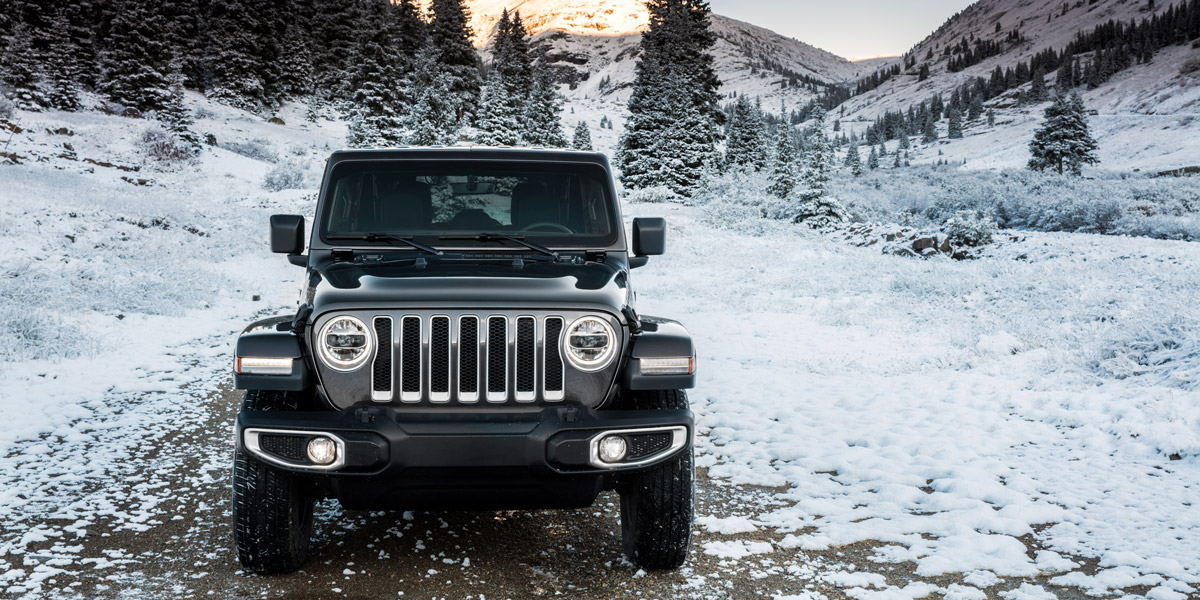 Don’t Rush It
Don’t Rush It
One of the biggest things to remember when braving snow-covered roads is to take your time. Ignore, for the most part, the drivers behind you, and don’t let them pressure you into going faster than you are comfortable with. If they are in that big of a hurry then they should have left sooner.
Driving at your own pace keeps your car driving smoothly down the road and helps to avoid jerky motions, sudden acceleration, or slamming on the brakes. Having to turn the wheel suddenly, or slam on the brakes, or hit the gas suddenly, even a little, can cause your car to slide as it loses its rather shaky grip on the road. Everything you do while driving in the snow must be slow, gentle, and deliberate.
Plan In Advance
The more snow that falls the more slippery the road will get. As the slip factor increases, then how far you are looking down the road should increase as well. Try to plan out your actions in advance. If you know you are turning right at the light ahead of you, start slowing down in advance so you don’t end up sliding through the intersection. You should always allow for double the stopping distance when navigating snow or ice. If there is a natural curve in the road but no stop, you should still slow down so your tires can maintain their grip on the road.
Driving in the snow isn’t the time to change your playlist or text someone back; stay aware of your surroundings and other drivers, and keep your eyes on the road. That’s your best bet to safely drive your way from point A to point B.
Watch Your Traction
Unless you are the most perfect driver in the world, you are most likely going to lose traction at some point during your winter cruise. If you are following our “Don’t Rush It” tip then you should be fine getting your car going straight again but for those who may have skimmed over that part then be ready to keep an eye on your car’s traction pretty much constantly. A lot of cars come with traction-control and stability-control warning lights should you start to slide out a bit, but testing your traction can be done via brakes as well.
Here’s how: If you are in a safe environment away from other cars and pedestrians, and driving in a straight line, you can gently apply your brakes for one or two seconds to see how your car responds to help gauge the traction you have at your disposal. When you tap the brakes and you start to feel that skipping from your brake pedal and/or the anti-lock-brake system engages then you know that you’re dealing with some extremely slick roads.
If you can slow down at a reasonable rate without ABS engaging then you’re on a more grippy surface. You still need to be safe because grippy doesn’t mean the roads are back to normal, it just means your car can have an easier time stopping if you need it to while driving. Again, this kind of test should only be done where it is safe, away from other cars and pedestrians, you can drive in a straight line, and you’re comfortable with it.
Also, road conditions can change constantly during the winter. You may have assessed how good or bad your traction is at the beginning of your drive but you still need to err on the side of caution in case the roads have become icier throughout the day.
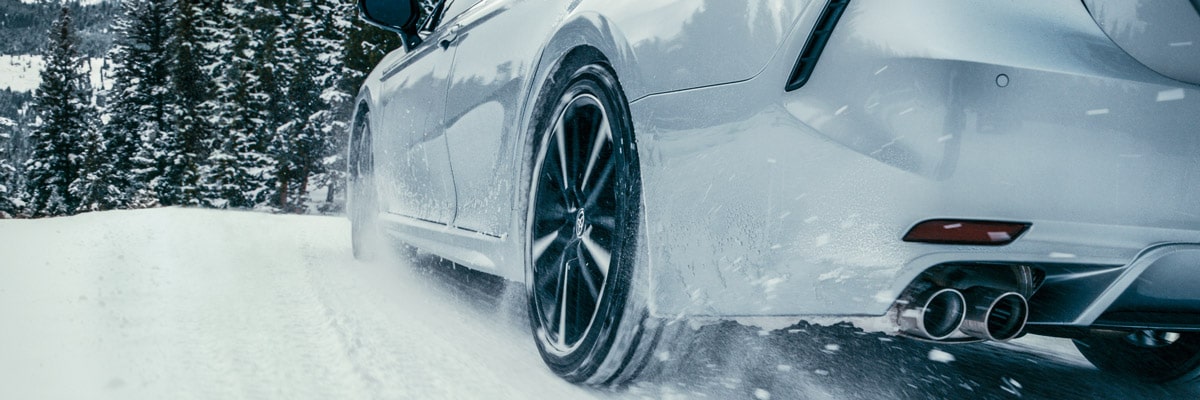 Use Your Anti-Lock Brakes Optimally
Use Your Anti-Lock Brakes Optimally
If for whatever reason, you are in a situation where you need to stop as quickly as possible in the snow or ice then it is time for your car to show off just what exactly its anti-lock-brake system is meant to do. Almost all new vehicles on the road are equipped with anti-lock brakes which is a system that uses your car’s onboard computer to optimize braking in extreme situations. So how do you engage it?
If you are in a situation where slowing down slowly isn’t an option, or you’re trying to avoid something, or you are in a skid you can’t recover from then press down on your brake pedal and don’t let up, your car’s computer will do the rest. ABS works by balancing and keeping each wheel braking as aggressively as it can be based on the available traction it is reading so as long as you have your foot on the brake your car is going to know which brake to engage to get it to stop as quickly as possible.
One of the best features of ABS systems is the steering capability you can maintain even while keeping your foot on the brakes. The computer ABS system will adjust the force of each brake on each wheel appropriately allowing you to steer to avoid obstacles while still slowing down. So don’t just slam on the brakes and let go of the wheel, slam on the brakes and keep steering!
No system is perfect. Some situations could arise where an accident is unavoidable. But if you know how to use your car’s ABS system correctly and effectively then you’ll have one more tool to use to drive safely in the snow.
All-Wheel Drive & Overconfidence
If your car has all-wheel drive or four-wheel drive at its fingertips then you might think you are good to go and you can drive as you would normally. This is incorrect. AWD or 4WD can form a sense of security and confidence while on slick roads because of the car’s ability to power all four wheels rather than just the two. On slippery surfaces, the use of all four wheels to help accelerate can make it feel like you have more traction than you actually do but in reality, those systems don’t improve your vehicle’s ability to turn or stop on snowy roads. You have just as much traction as any other 2-wheel drive car.
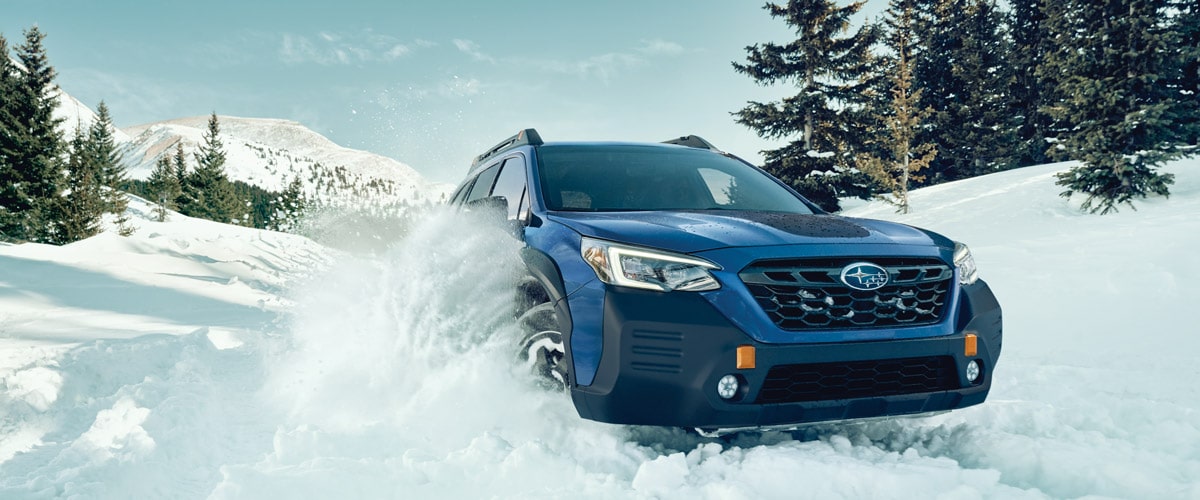 Know Your Routes
Know Your Routes
This lines up well with the previous tip of planning in advance. You know the roads around you as you’ve most likely been driving on them for a while now. Think about the different routes you can take. Does the hill on this route have enough space after it to slow down at a reasonable rate or does it immediately end at an intersection or ditch? Is there an intersection that you would usually pass through that always has heavy traffic no matter the time of day? Think about those high-risk zones and how you can change your route to avoid them.
What Does the Road Say?
Look at the road before you drive or while you drive to see what the surface is like to assess what type of snow or ice you are dealing with. A shiny surface usually means you’re in for an extremely slippery drive as that is a sign of ice on the road. A dull flat look usually means that the snow is dry and crunchy. Dry snow actually offers pretty good traction, but not so good of traction that you can just go about your day as you normally would.
Squiggly Flashing Lights
Driving in the snow is all about traction and built into most cars is a system, much like the ABS system we talked about earlier, that can help you assess early on how much traction you have before you end up driving straight sideways. Once you are underway be sure to pay attention to one particular flashing light in your dash, it is one of the outlines of a car with squiggly lines behind it.
If you are accelerating and this light starts blinking at you then this is the stability-control system warning you that the wheels that your car needs to drive are slipping on you. Don’t ignore it. Ease up on the gas and slow your acceleration down so your tires can regain their traction again.
The stability-control system also works while turning. Also, if the same warning light is flashing while turning that is your car telling you that it is sliding out of the intended path. Easy fix as before, ease up on the gas, slow down and let your tires regain their traction. And don’t just hit the gas again once the light stops flashing. Just because there isn’t a warning going off doesn’t mean you’re good to go tearing up the street.
Be Prepared
Sometimes we get into a situation where getting stuck in the snow or on the side of the road is unavoidable. But instead of sitting in your car freezing waiting on the tow truck, you can prepare for just that situation before you even leave the driveway. Pack a snow shovel in the back of your rig, along with a bag of salt and a tow strap. Prepare for those situations and it can help you avoid the tow bill.
Winter vs All-Season Tires
One word. Tires. Tires are one of the biggest factors to driving safely during winter weather. Proper winter tires help improve your safety margin and ease your nerves a bit by knowing you have that extra layer of protection. Winter tires maintain much higher traction in snow and ice than all-season tires.
Want to learn more about the difference between winter tires and all-season tires? Check out our blog post Winter Tires vs. All-Season Tires
Already have the tires? Schedule a service appointment.
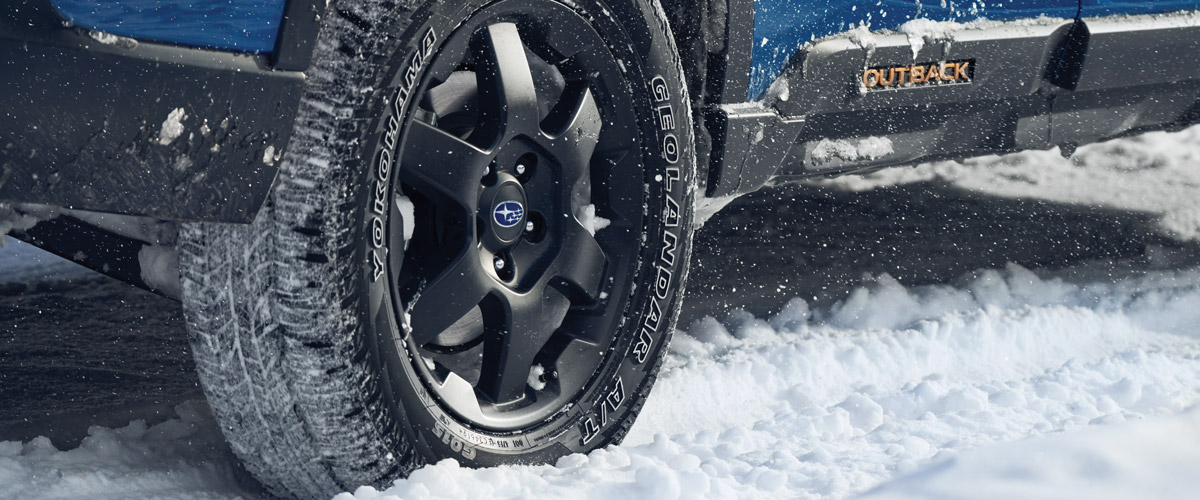 Final Thoughts
Final Thoughts
As stated at the beginning of the article, if you can, avoid driving in the snow altogether. Spend the day at home where you don’t have to worry about how your car will respond while trying to make it to work. If you have to drive then use the tips above to help make the drive a little easier. Always remain vigilant. Keep your eyes on the road. Let your periphery do its job. Look out for other drivers. Be prepared. You are the one behind the wheel but this is probably one of the only situations where you could have the least control while being the driver.
Looking for more tips on winter driving? Consider following these links for more info.
National Highway Traffic Safety Administration – Winter Weather Driving Tips
National Highway Traffic Safety Administration – Winter Driving Safety
Washington Department of Transportation – Winter Driving Tips
Oregon Department of Transportation – Winter Travel Tips
Contact Us
